Support for this publication was generously provided in part by the United States Department of Defense-Minerva Research Initiative. The views expressed are the author’s alone, consistent with Brookings’s commitment to independent research.
After intense negotiations with the Taliban, the chief U.S. negotiator Zalmay Khalilzad announced yesterday that core elements of a deal to end the U.S. counterinsurgency operation in Afghanistan have been basically agreed. The disclosed core elements are not surprising: The Taliban promises Afghanistan’s territory will not be used by international terrorist groups and the United States agrees to withdraw its forces.
However, many difficult questions remain: How fast will the United States withdraw its military forces—in as few months as the Taliban wants (militarily infeasible and strategically unsound for the United States and Afghanistan), or between 16 to 24 months as the United States seeks? Will there be a residual U.S. military force, of say 1,000 soldiers, to protect the U.S. embassy, which—wink, wink, with the Taliban’s permission—will have the capacity to conduct limited counterterrorism strikes, something the Obama administration had contemplated in 2014? Will the Taliban finally agree to negotiate with the Afghan government, as President Ashraf Ghani, very leery of the U.S.-Taliban negotiations, has been insisting? Will the Taliban agree to a ceasefire while it negotiates with the Afghan government? And will the U.S. military remain in Afghanistan (and at what strength) until the agreement is concluded? If not, the U.S.-Taliban deal will merely be a fig leaf for U.S. departure while the Afghan government and people are left on their own to face the Taliban.
The agreement so far
The core of the U.S.-Taliban deal has been the easiest part to negotiate, although getting the Taliban to commit to preventing terrorist attacks outside of Afghan territory is not a trivial concession. The Taliban itself did not engage in such attacks and indeed, some members of the group considered al-Qaida “a plague on Afghanistan” and regretted that the Taliban had given it shelter and support in the 1990s. But to publicly disavow support for its international jihadi brethren still comes with costs for Taliban—particularly compromising its ability to receive support, including funds, from global jihadi networks if it ends up mired in a prolonged civil war in Afghanistan after U.S. withdrawal. But this commitment not to allow Afghanistan to be used for terrorist attacks abroad has been a Taliban talking point for a long time; the difference is the United States is now accepting those words. The Taliban has been actively and determinedly fighting the Islamic State in Afghanistan since 2014, a group that includes commanders who were expelled from the Taliban or who had defected, as well as fighters of the Islamic Movement of Uzbekistan who had been fighting in Afghanistan and Pakistan for years, albeit in the past alongside the Taliban.
Yes, the U.S. government has long wanted to leave Afghanistan: The Obama administration had hoped to withdraw most of the U.S. military forces in 2013 and 2014, until that goal was dashed by the Islamic State’s sweep through Iraq to the doorstep of Baghdad, and the fear in Washington that large parts of Afghanistan could similarly fall to the Taliban. Despite his pronouncement of a conditions-based, no-timeline commitment to Afghanistan in August 2017, President Donald Trump was never really committed to persevering in the country, and rapidly lost resolve. His out-of-the blue, unilateral, and counterproductive announcement in December 2018 that the United States would withdraw 7,000 U.S. troops and halve its force in Afghanistan, though not yet executed, merely exemplified his long-held desire to liquidate U.S. military efforts in the country.
The difficult negotiations between the Taliban and the Afghan government
This news of the U.S.-Taliban breakthrough is welcomed by many in Afghanistan who, exhausted by decades of civil war, insurgency, and counterinsurgency, are eager for peace. But the prospective political order is also worrisome to many—not just President Ghani and other Afghan powerbrokers, but also civil society and human rights groups and, of course, women.
Among the immediate questions is how the peace negotiations will interact with Afghanistan’s presidential elections in July 2019. Will the Taliban be allowed to run its own candidates although the registration deadline has passed? Such a change would profit the Taliban little, as the group has no chance to win. Will the elections be postponed until an Afghan peace deal is struck, with an interim government created in the meantime, including strong Taliban representation? That idea was floated in Afghanistan in the fall, but President Ghani, who would thereby lose power, remains fiercely opposed to it.
Ghani’s chances of winning over 50 percent in July’s presidential elections are not high. His government has been isolated for over two years; its legitimacy and support have declined over the past four years; and it has suffered the defection of many political allies, key powerbrokers, and constituencies. Seventeen other candidates are running for president. Two rounds of elections are thus likely. Unless Afghanistan radically cleans up its electoral processes and a consensus candidate emerges beforehand, claims of fraud will be rampant and a months-long political crisis may lie ahead, as in the last two presidential elections. Such a political crisis can derail the Taliban-Afghan part of the negotiations, or the Taliban may seek to form an interim government amidst the crisis. Will the U.S. military hang around through all of these complications? Will there be an international peacekeeping force to guarantee the terms of any eventual deal? Who will field it, and with what kind of capacities?
There are other impending challenges as well. Given the Taliban’s extensive military power and momentum on the battlefield, the group will not agree to have its fighters simply go through a disarmament, demobilization, and reintegration (DDR) process and head home. The deal won’t resemble Colombia’s settlement with the Revolutionary Armed Forces of Colombia (FARC), which established a DDR process, transitional justice processes for the FARC, highly limited political representation, and broad and rural socio-economic development. The battlefield in Afghanistan may be stalled like it was in Colombia since 2008, and the Taliban lacks the military capacity to take over the whole country even after a U.S. military withdrawal, but the Taliban retains a far greater military capacity than the FARC enjoyed. The Taliban can slug it out in a protracted civil war and take over large parts of the country. With good reason, many fear that absent the U.S. military, the Afghan security forces will melt down under Taliban pressure and will break up along ethnic and patronage factions.
Nor will the Taliban-Afghan negotiations look like Nigeria’s negotiations with the Movement for the Emancipation of the Niger Delta (MEND). That deal essentially transferred a large sum of money to the MEND leadership and allowed them to get positions of power, but did not address the grievances of the Niger Delta region. Numerous insurgent groups operate there again.
The Taliban will either insist on maintaining its military capacity, or having a large number of its fighters integrated into the Afghan security forces. Given how many government-sponsored and informal militias operate in Afghanistan and how many Afghan powerbrokers retain a militia capacity and have loyal factions within the Afghan security forces, any true disarmament is enormously risky for the Taliban. But will the U.S. Congress have the stomach to pay (currently some $4 billion annually) for an Afghan military that includes Taliban soldiers? Will someone else, such as the European Union fearing Afghan refugees, pick up the bill?
The size of Afghanistan’s security forces will likely be substantially reduced even as large numbers of the Taliban join up. That might be good economically as Afghanistan cannot afford its current security sector costs. But given the country’s high unemployment, it means a lot of unemployed Afghan men, highly susceptible to militia recruitment in the short term. Will that produce local outbreaks of conflicts and political fragmentation? And given this instability, will the United States and the international community keep providing substantial economic aid?
Will there be transitional justice arrangements or will the Taliban be given blanket absolution for its crimes and atrocities? The Taliban will of course not submit itself to any kind of accountability unless other Afghan powerbrokers also go through the process, given that none of the other Afghan powerbrokers with egregious violations of human rights—from Rashid Dostum, currently a vice president, to Gulbuddin Hekmatyar—have faced no accountability for their actions. But this impunity for murder, rapaciousness, and resource theft has been a core driver of Afghanistan’s instability. If a truth and reconciliation tribunal is actually established, it may be just window dressing without investigative and enforcement capacity—like in Nepal, where two such tribunals have not meaningfully prosecuted many or even established the “truth” for victims.
The many internal and external spoilers
Even trickier are the issues of power-sharing and the Afghan Constitution. The Taliban will not settle for only 10 reserved seats in the parliament and the right to compete in Afghan elections, like the FARC has. It will want substantial power in the national government. It may want to be “given” large parts of the country’s south to run as its fief, where it currently has de facto power. This Taliban proposition was previously not acceptable to Afghan powerbrokers in the north and south, who can be spoilers of any peace deal in a myriad of ways. Nonetheless, at least in Afghanistan’s south, the Taliban had conveniently assassinated some of those most dangerous to it such as General Abdul Raziq. But the tangles among the Taliban and powerbrokers and influential families such as the Karzais, Shirzais, Akhundzadas, and Assadullah Khan in the south will be explosive for years. The north, with politicians such as Bismillah Khan Mohammadi, Atta Mohammad Noor, and Amrullah Saleh—even if they retain offices in a government including the Taliban—will be even more combustible.
How much will a negotiated deal compromise civil and women’s rights and other freedoms in Afghanistan? Even if nominally included in a new Afghan constitution, their already problematic implementation will likely worsen. What will that do to the human capital the country has been trying to build and desperately needs? Peace could crush the aspirations of many young Afghans, just as the war has been destroying their lives.
Finally, there are enormous risks of the peace deal being subverted from the outside, potentially by Iran, Russia, India, Pakistan, and Saudi Arabia, among others. Both Russia and Iran want the United States to pull its military from the region. Indeed, both have been cultivating ties with the Taliban through the provision of weapons, intelligence, and military assistance. Russia sees the Taliban as a lesser danger than the Islamic State. Iran has reconciled itself to the Taliban being a major force for years to come, and it has strengthened its leverage over the Taliban by hosting several hundred Taliban commanders and their families, many of whom have decamped from Pakistan. However, both Russia and Iran will play the Taliban against their other assets and long-cultivated proxies and militias, including in the north. Saudi Arabia, too, is likely to use Afghanistan as another proxy battleground against Iran. Pakistan, however, cannot rely on the Taliban to prosecute its interests in a post-deal Afghanistan, considering that the Taliban is as fed up with the yoke of Pakistan’s Inter-Services Intelligence Agency as are other Afghans with Pakistan’s interference. But Pakistan will not stop meddling in Afghanistan’s affairs. Inevitably, India will cultivate its own assets, not trusting the Taliban’s promise to prevent terrorism from Afghanistan.
Meanwhile, even getting as far as a struggling post-deal government will be a success. The Vietnam scenario looms large over Afghanistan: The United States negotiates its military departure; for a while, the insurgents negotiate with the struggling government; soon the negotiations break down, promises are broken, the fighting goes on regardless of an initial ceasefire; and another awful iteration of civil war breaks out.
A civil war is not inevitable and there is no alternative to negotiating. But simply negotiating a speedy U.S. withdrawal brings little joy to Afghanistan.
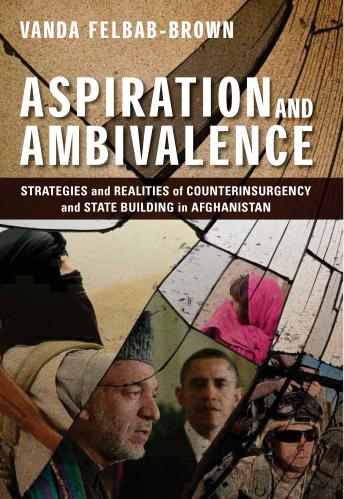
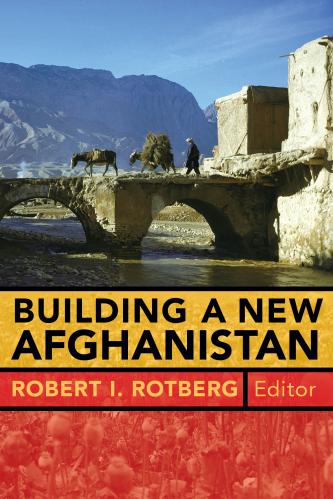
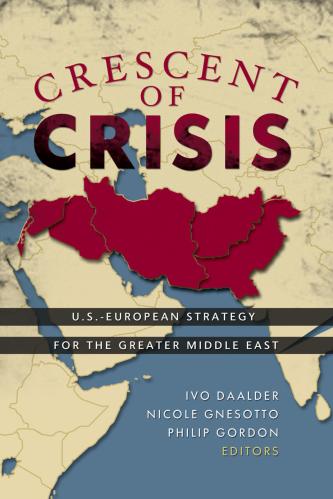
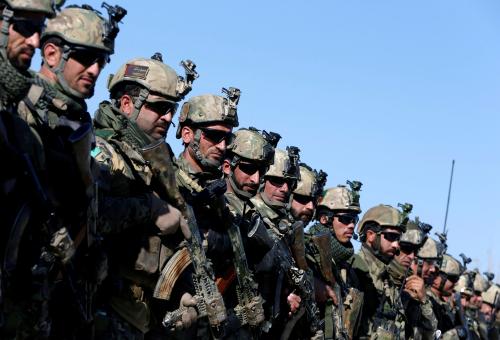
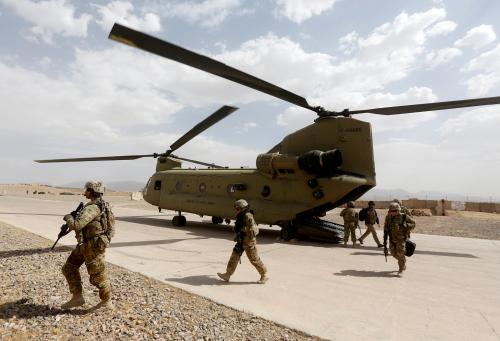


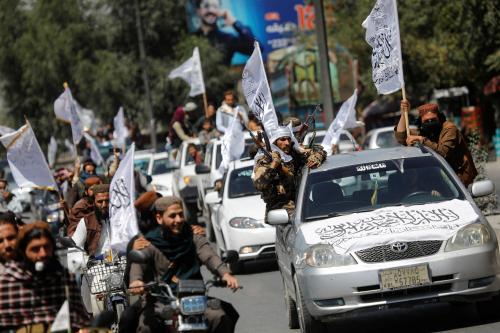
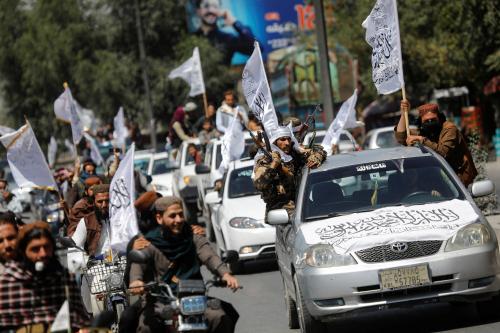
Commentary
The US-Taliban negotiations breakthrough: What it means and what lies ahead
January 29, 2019